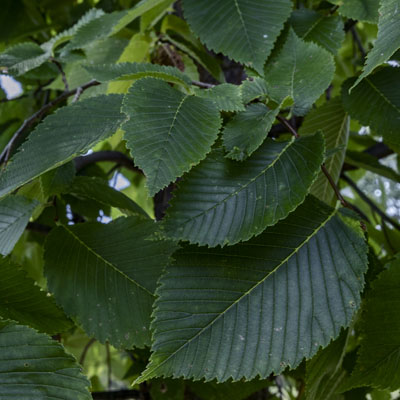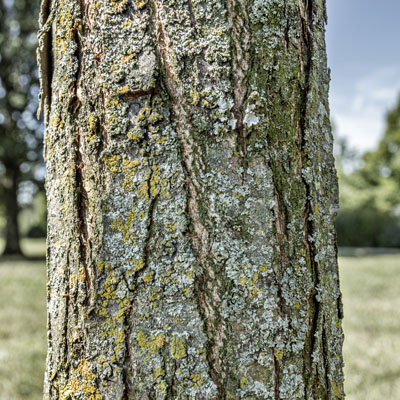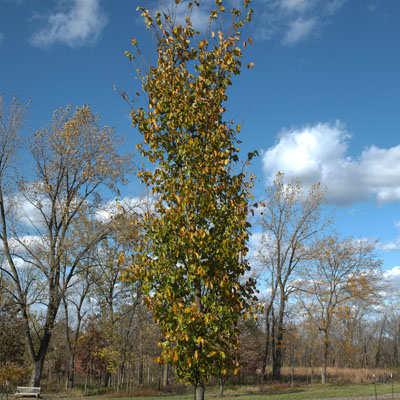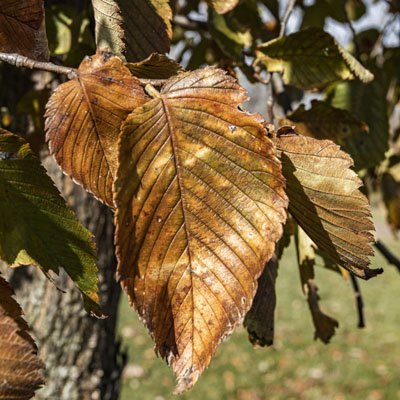Tree Catalog - Best Trees For Dayton, Ohio
Welcome to the Arbor Experts Tree Catalog, where you'll find photos and complete descriptions of the trees we most highly recommend for the Dayton, OH area. All of these trees will do well here and would be a beautiful addition to your yard.
Princeton American Elm
Ulmus americana 'Princeton'





American elms once lined the streets of countless cities and towns. Their leafy, upright branches and arching form made a pleasant, shady canopy overhead. Once ubiquitous, the American elm population was nearly eliminated by Dutch elm disease (DED). Thankfully, subsequent cross-breeding and cultivars have produced American elm varieties that are tolerant of, or resistant to, Dutch elm disease. Propagated by Princeton Nurseries in 1922 (and planted at the entrance to Princeton University in New Jersey), the ‘Princeton’ cultivar is one of the best.
Characteristics
‘Princeton’ was initially selected for its dark green leaves and upright form, but proved to be among the most DED-resistant cultivars for USDA zones 3-9. Among its qualities are:
- A spreading, vase-like crown
- Good shade for streets
- Tolerance of road salt, alkaline soils, some flooding, and drought
- Fall color
- Resistance to elm beetles
- Tolerance of walnut tree juglone
Reaching 50 to 70 feet, and spreading nearly as wide, ‘Princeton’ is useful as a street tree or landscape specimen. Its dense foliage makes welcome shade, and its upright, vase-shaped crown, gray furrowed bark, and ridged, toothed leaves are immediately recognizable.
Growing Tips
Plant your ‘Princeton’ elm where it has enough room to reach its mature size. Elms require some pruning to maintain branch structure, but planting a tree that is too large for its site results in unnecessary or excessive pruning. Pruning cuts are wounds, and for a species decimated by an existing pathogen, pruning wounds are potential openings for disease.
This tree likes full sun and moist, well-drained soil. Amended soil, a layer of mulch, and sufficient irrigation during hot weather will help ensure your elm tree’s vigor and resistance to pests and pathogens.
Pruning should be done during the dormant season before leaves emerge. A benefit of dormant-season pruning is that pests and pathogens are not nearly as active (if they're active at all) as during the growing season.
Things to Look Out For
Elm leaf miners, elm yellows, and verticillium wilt are among the threats to elm trees. Elm yellows is a disease, usually spread by leafhoppers, that attacks the tree’s food supply and kills phloem tissue. As of yet, there is no prevention or cure for elm yellows, but OSU has ongoing research looking for ways to eliminate the disease.
As with all potential pests and diseases that could damage your tree, the best approach is to follow best practices in siting, planting, and maintaining your elm from the start. These practices lay the foundation for a healthy and resistant tree in the future.
American elms are well suited to urban environments, which makes them valuable despite the history of Dutch elm disease.
